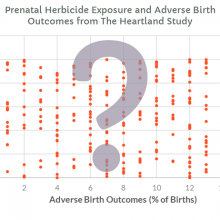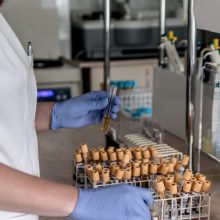All Analytical Methods Posts
One of the main sources of pesticide exposure is through the diet. It is critically important to understand pesticide residues in foods and how dietary risks have changed over time. Over the last 20 years HHRA's Executive Director Charles Benbrook…
HHRA's team has been making lots of progress in our important work at the intersection of food, farming, and health. We started the spring/summer of with a bang as we brought HHRA on the road to the Public Health Conference…
Once in a while two data points are arrayed in a graph, setting off the bright light of insight. A good example appeared in “The Morning,” David Leonhart’s daily New York Times online synopsis of the news of the day.…
HHRA is pleased to announce a new partnership with the Centre de toxicologie du Québec analytical laboratory, or CTQ. This world-renowned lab will process biological samples collected through HHRA's medical research on the public health implications of pesticide exposure. For…
By: Robin Mesnage, PhD Our gut is home to trillions of bacteria which are critical to good health. Because the once-in-a-century herbicide glyphosate can kill bacteria in a petri dish, the notion that glyphosate acts as an antibiotic in the…
This new study — the first to compare the toxicity of glyphosate to the widely used European Union (EU) Roundup formulation MON 52276 at doses that regulators claim to be safe — was published in the journal Environmental Health Perspectives on…
Charles Benbrook, HHRA's Executive Director, and his colleague Donald Davis of the University of Texas-Austin's Biochemical Institute published a peer-review paper in October, 2020 describing the analytical system they developed to measure the risk from pesticide exposure in the diet.…







